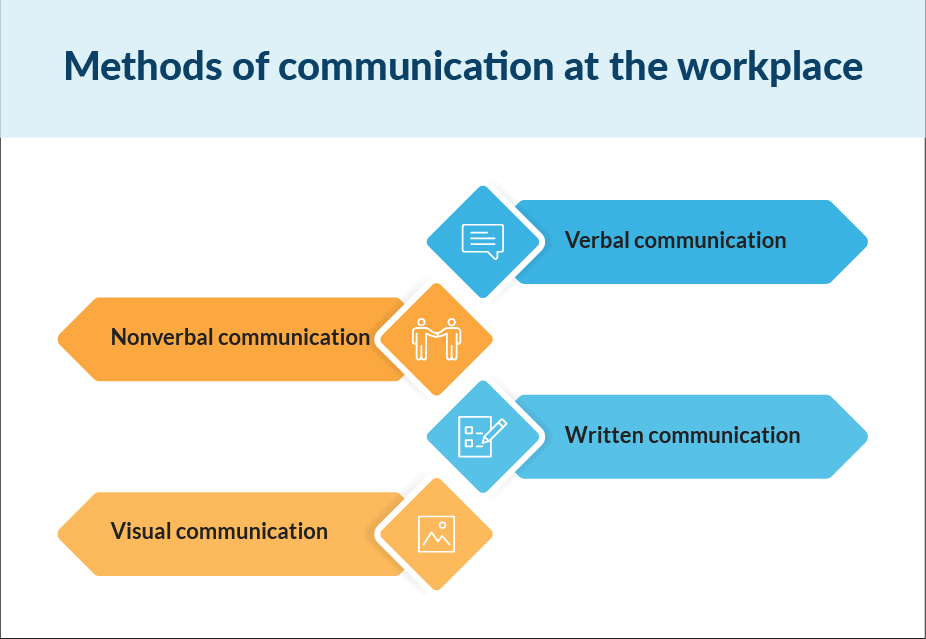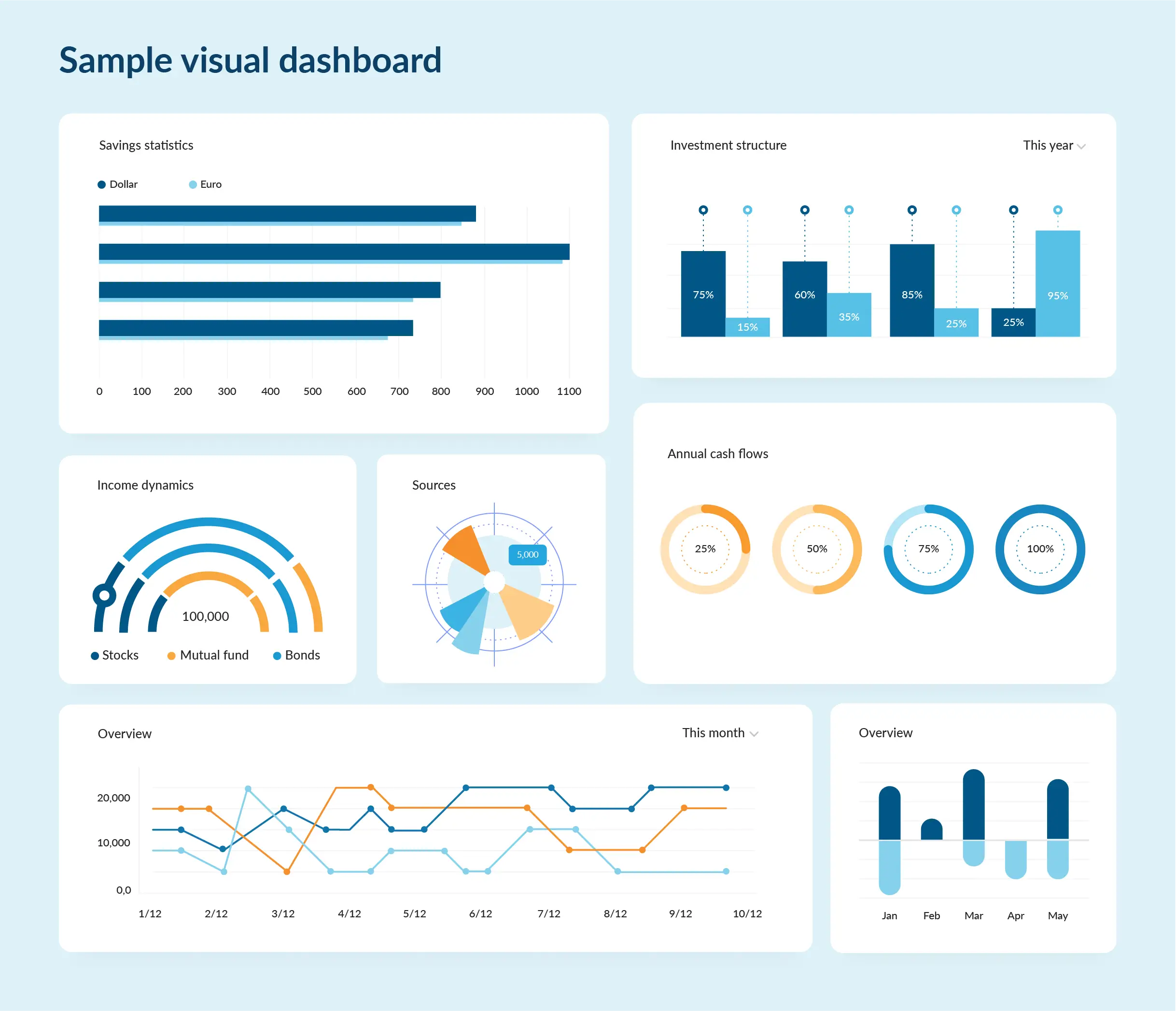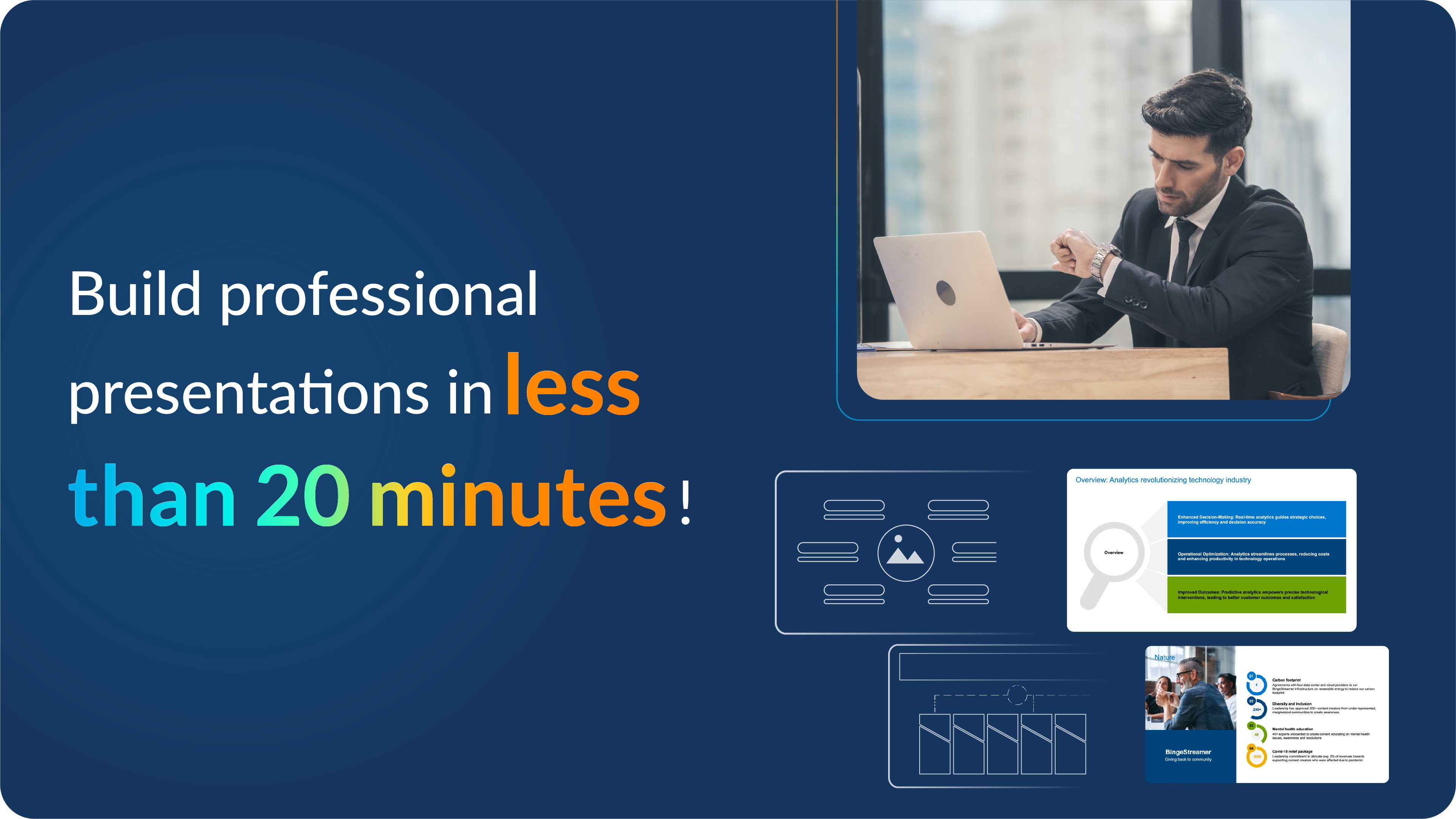4 types of communication methods and tips to communicate better at work

Communication is essential for any company. It's the foundation for working well together, reaching goals, and growing the business. Learning to communicate in different ways is vital in today's business environment. It helps ensure information is shared smoothly, reduces misunderstandings, and creates a positive work environment.
Whether you work in an office or from home, how you talk to your co-workers, clients, and bosses can make a big difference in how happy you are in your job and how much you get done. In this article, we'll look at four types of communication methods, their challenges, and tips for improving them in the workplace.
What is communication?
Communication involves sharing information from one person to another or a group of people. Whether it's talking, texting, or even using gestures, there's always someone sending a message and someone receiving it. It can get complicated because your feelings, where you are, and even how you communicate can affect how well you communicate your point.
Good communication skills are essential to employers everywhere because it takes work to find people who can express themselves clearly, accurately, and in a way that works for everyone.
Importance of different methods of communication
Effective workplace communication is important for professional success and growth. When employees, teams, leaders, and all stakeholders communicate clearly, it helps everyone understand each other better and work together efficiently. Good communication can also build trust among people and a strong professional network.
In a professional setting, selecting the appropriate form of communication is crucial based on the circumstances.
For example:
- When applying for a job, it's more appropriate to send a written message, preferably via email, to the hiring manager instead of conveying the information verbally in passing.
- When delivering negative information, it is better done verbally or visually with an empathetic tone.
Four main types of communication methods
The four key types of communication methods often used in organizations are verbal communication, non-verbal communication, written communication and visual communication. Let's take a look at each of them below:

1. Verbal communication
Verbal communication in the workplace involves using spoken words to convey information, ideas, and feedback. Whether in person, on the phone, or during presentations, using spoken words allows instant feedback and the chance to adjust our message based on the listener's response.
This kind of communication occurs in all sorts of interactions at work, such as one-on-one chats, team face-to-face reviews/meetings, presentations, phone calls, video conferences, brainstorming sessions, feedback and coaching, and casual conversations.
Challenges of verbal communication
- Misinterpretation: The tone, pitch, and pace of verbal communication can lead to misunderstandings. For instance, a sarcastic remark can be misinterpreted negatively if the other person does not detect the tone.
- Lack of documentation: Verbal communication works best when there is a tangible record of the information exchange. Suppose there are no records of the verbal conversations. This can lead to disputes or confusion, especially if not all parties need to remember the message or the information shared accurately.
- Distractions: Verbal communication can be easily disrupted in a noisy or busy environment, leading to incomplete or misunderstood messages.
💡Tips to improve verbal communication skills at the workplace
- Practice active listening: Pay attention to the speaker, make eye contact, and avoid interrupting. Attentively listen to the speaker, and think before you respond/speak.
- Ensure clarity and conciseness: Keep the message clear, concise, and to the point.
- Use positive body language: Maintain an open posture, smile, and nod to show engagement.
- Seek feedback: Encourage questions and feedback to ensure understanding.
2. Non-verbal communication
Non-verbal communication is all about conveying a message without using words. It includes body language, facial expressions, gestures, eye contact, posture, and even silence. According to a research study, 55% of communication is nonverbal, making it a critical method to understand and master in the workplace.
Examples of non-verbal communication at work
Professionals must be aware of their nonverbal signals and accurately interpret those of others to improve collaboration and communication. Non-verbal communication includes:
- Body language: Includes hand gestures, facial expressions, and movements that convey a message. For example, crossing arms may indicate defensiveness, while a smile can suggest friendliness or agreement.
- Eye contact: This is a powerful form of nonverbal communication. It can convey an individual's confidence, interest, attentiveness, and other emotions. For example, avoiding eye contact with an audience may suggest discomfort or disinterest, while having eye contact suggests confidence or interest in engaging with them.
- Posture: How individuals carry themselves, such as how they stand or sit, can communicate a range of messages, such as openness, aggression, or submission. For example, an open posture with relaxed shoulders typically indicates approachability, while slouching may suggest disinterest or lack of confidence.
- Facial expressions: Facial expressions can convey emotions such as happiness, sadness, anger, or surprise. For example, a friendly smile can help connect with another individual, while a frown may indicate disapproval or concern.
Challenges of non-verbal communication
- Misconception of behavior: Nonverbal cues can often be easily misinterpreted, especially across cultures. For example, certain gestures in one culture might be perceived as positive but can be considered offensive in another.
- Lack of clarity: Non-verbal communication is often ambiguous. Alongside verbal communication, it can be easier to understand the exact meaning of a non-verbal cue.
💡Tips to improve non-verbal communication skills at the workplace
- Maintain positive body language: Pay attention to your body language, hand movements, facial expressions, etc. Having a positive body language that matches your message can help you communicate more effectively.
- Read others’ non-verbal signals: Pay close attention to others' body language and facial expressions to understand their feelings and reactions. If you see that they are not in an ideal state of being, try to address it or help understand their issue(s).
- Adapt to different cultural norms: Be mindful of cultural differences in non-verbal communication.
3. Written communication
Effective written communication involves conveying messages through written words. It includes emails, memos, reports, newsletters, and other documents. Written communication, such as policies, procedures, and legal documentation, is vital for formal communication in the workplace.
Different forms of written communication at the workplace include emails, reports and proposals, memos and circulars, meeting minutes, newsletters and bulletins, instant messaging (for quick, informal exchanges), policies and manuals, notices and announcements, training materials, etc.
Challenges of written communication
- Lack of immediate feedback: Unlike verbal communication, written communication does not allow immediate clarification or feedback.
- Misjudgment: Written words can be easily misinterpreted, especially if the tone needs clarification. For example, a sentence intended to be friendly could be perceived as rude or abrupt.
- Time-consuming: Writing clear and concise messages can be time-consuming, especially for complex subjects or large documents.
💡Tips to improve written communication at the workplace
- Be clear and concise: Use simple language and get straight to the point.
- Proofread and edit: Always proofread your work to avoid grammatical errors and ensure clarity.
- Use appropriate tone: Your writing should match the purpose of the communication.
- Organize your content: To communicate your message effectively, use well-structured documents or presentations with appropriate headings, bullet points, and short paragraphs.
4. Visual communication
Visual communication uses visual elements to convey information or messages. This includes charts, graphs, infographics, slides, videos, and other multimedia tools. Visual communication is especially effective for presenting complex data or information in a way that is easy to understand and remember.
Research indicates that visuals are critical in presentations, as 90% of information sent to the brain is visual. Examples of visual communication at the workplace include charts and graphs, diagrams and flowcharts, posters and signage, videos and multimedia, whiteboards and flipcharts, dashboards, etc.

Challenges of visual communication
- Misinterpretation: Visuals can be misinterpreted if not designed correctly. For example, a poorly labeled graph may convey misleading information.
- Requires skill: Creating compelling visuals requires skill and knowledge in design and data presentation.
- Time-consuming: Designing and preparing visual content can be time-consuming, mainly if it involves complex data or graphics.
💡Tips to improve visual communication at the workplace
- Keep it simple: Avoid clutter and focus on key information.
- Use high-quality images and graphics: Ensure all visuals are clear and high-quality.
- Be consistent: Use consistent colors, fonts, and styles to maintain a cohesive look.
- Provide context: Always provide context or explanations for the visuals to avoid misinterpretation.
Effective communication isn't just about conveying a message; it's about ensuring that the message is understood, leading to positive outcomes for everyone.
Mastering various communication methods is essential to growing professionally. The choice of communication - whether verbal, nonverbal, written, or visual; each method has its strengths and challenges. Knowing when and how to use each mode of communication can help you effectively communicate with your team and create a positive work environment. Embracing these communication methods can enhance your skills in the workplace and make you a valuable team member.
Frequently asked questions (FAQs):
1. How can we ensure that the lack of nonverbal cues does not impact communication in remote business setting?
To make remote communication more effective, encourage video calls for essential conversations, check in with your team regularly, communicate clearly, use collaborative tools, and create a culture of open communication.
2. What is the role of feedback in effective communication?
Feedback is crucial in communication, bringing clarity and driving continuous improvement. Constructive feedback helps build trust, reduce misunderstandings, and foster lively organizational interaction.
3. What is the importance of formal vs. informal communication in the workplace?
Professional communication at work is crucial for organization and clarity. Formal communication maintains records and ensures correctness, while informal communication fosters relationships, teamwork, and idea-sharing. Both are vital for a healthy work environment and optimal performance.
4. How can you personalize communication at the workplace?
Adjust your message to fit your colleagues' preferred communication methods when communicating at work. Use a friendly tone, find common ground, keep your messages simple, and ask for feedback to create a more inclusive and respectful workplace.
5. How can you promote effective communication in the workplace?
To facilitate effective workplace communication, encourage open and honest dialogue, use tools like Slack, Microsoft Teams, Asana, and Trello for better team communication and organizational efficiency.
How can Prezent help enhance your organization’s communication?
Presentations are crucial for workplace communication, boosting engagement, and supporting persuasion. Prezent helps create professional-looking presentations quickly, enhances storytelling abilities, engages the audience better, and offers advanced features. Prezent's platform features can help you improve your communication or your organization's communication by using the following features:
- Customize your communication: Using the Communication Fingerprints features, you can personalize the presentations according to your audiences' preferences. Prezent provides customizable templates and content that align with your company’s brand and messaging, ensuring consistency across all communications.
- Improve your organization's data visualization: Using the Template Converter feature, Prezent helps transform data into compelling visuals, such as charts and infographics. This makes it easier for leaders to communicate insights, trends, and performance metrics.
- Provides collaborative tools: The platform offers a Prezentation Library feature that facilitates collaboration among team members. This feature enables feedback, comments, and edits in real time for decks, leading to more cohesive and unified communication efforts.
- Saves time and enhances efficiency: With Auto Generator, which helps generate on-brand decks in minutes, and more than 35,000 ready-to-use templates of Slide Library, Prezent saves time creating brand-aligned presentations, allowing leaders and teams to focus more on strategic messaging and content quality.
Explore Prezent with a 14-day free trial or schedule a demo to experience firsthand how it can transform your business communication.
.avif)











